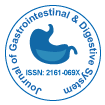Clinical Profile of Benign Biliary Structure in a Tertiary Care Center from Western India
Received Date: Aug 18, 2023 / Published Date: Jan 28, 2025
Abstract
Objectives: Benign Biliary Stricture (BBS) often cause a significant amount of morbidity and mortality in patients due to its relatively painless course of progression and subtle clinical manifestations. This hospital-based study primarily focuses on BBS in Indian patients intending to find out its different etiologies and clinical manifestations; to observe clinical progression and response to the different treatment measures.
Materials and methods: This observational study was conducted in a tertiary care hospital in western India for one year. Patients with age ≥ 18 years and diagnosed with benign biliary stricture were included in the study. Their socio-demographic details and clinical history were recorded. Routine blood testing and special tests for tumor markers were done. Ultrasonography (USG), Contrast Enhanced Computed Tomography (CECT) abdomen, Magnetic Resonance Cholangio-Pancreatography (MRCP), Endoscopic Ultrasound (EUS) and Endoscopic Retrograde Cholangio-Pancreatography (ERCP) were performed for evaluation of BBS. The total number of stents used, stents exchanged and duration of use in months till the resolution of symptoms were noted.
Statistical analysis: The descriptive analysis was done on demographic details and blood test results. Spearman’s Rank Correlation test was used to find out the association and correlation respectively between different variables.
Results: Out of 100 recruited patients, 56 were females and 44 were males with an overall mean age of 48.5 ± 14.96 years. Abdominal pain (90%), jaundice (42%) and fever (25%) were the most common clinical manifestations. Most of the BBS were of indeterminate cause (56%). Laparoscopic Cholecystectomy (LC) was the most common etiology in the remaining patients. Most of them were having altered liver function tests. CECT, MRCP and EUS-ERCP showed distal common bile duct as the most common location for stricture. All patients were negative for malignancy in brush cytology. The mean number of stent exchanges and mean number of stents used were 2.68 ± 0.69 and 4.16 ± 1.52 respectively. The average mean duration of stent use was found to be 8.77 ± 2.02 months.
Conclusion: BBS is a less studied subject in the Indian scenario. CECT and MRCP are more useful for diagnostic purposes. ERCP should be preferred as a therapeutic procedure over other surgical methods.
Keywords: Chronic pancreatitis; Common bile duct; Endoscopic retrograde cholangio-pancreatography; Laparoscopic cholecystectomy; Magnetic resonance cholangio-pancreatography
Citation: Dalai M (2025) Clinical Profile of Benign Biliary Structure in a Tertiary Care Center from Western India. J Gastrointest Dig Syst 15: 848.
Copyright: © 2025 Dalai M. This is an open-access article distributed under the terms of the Creative Commons Attribution License, which permits unrestricted use, distribution and reproduction in any medium, provided the original author and source are credited.
Select your language of interest to view the total content in your interested language
Share This Article
Recommended Journals
Open Access Journals
Article Usage
- Total views: 526
- [From(publication date): 0-0 - Dec 05, 2025]
- Breakdown by view type
- HTML page views: 398
- PDF downloads: 128
